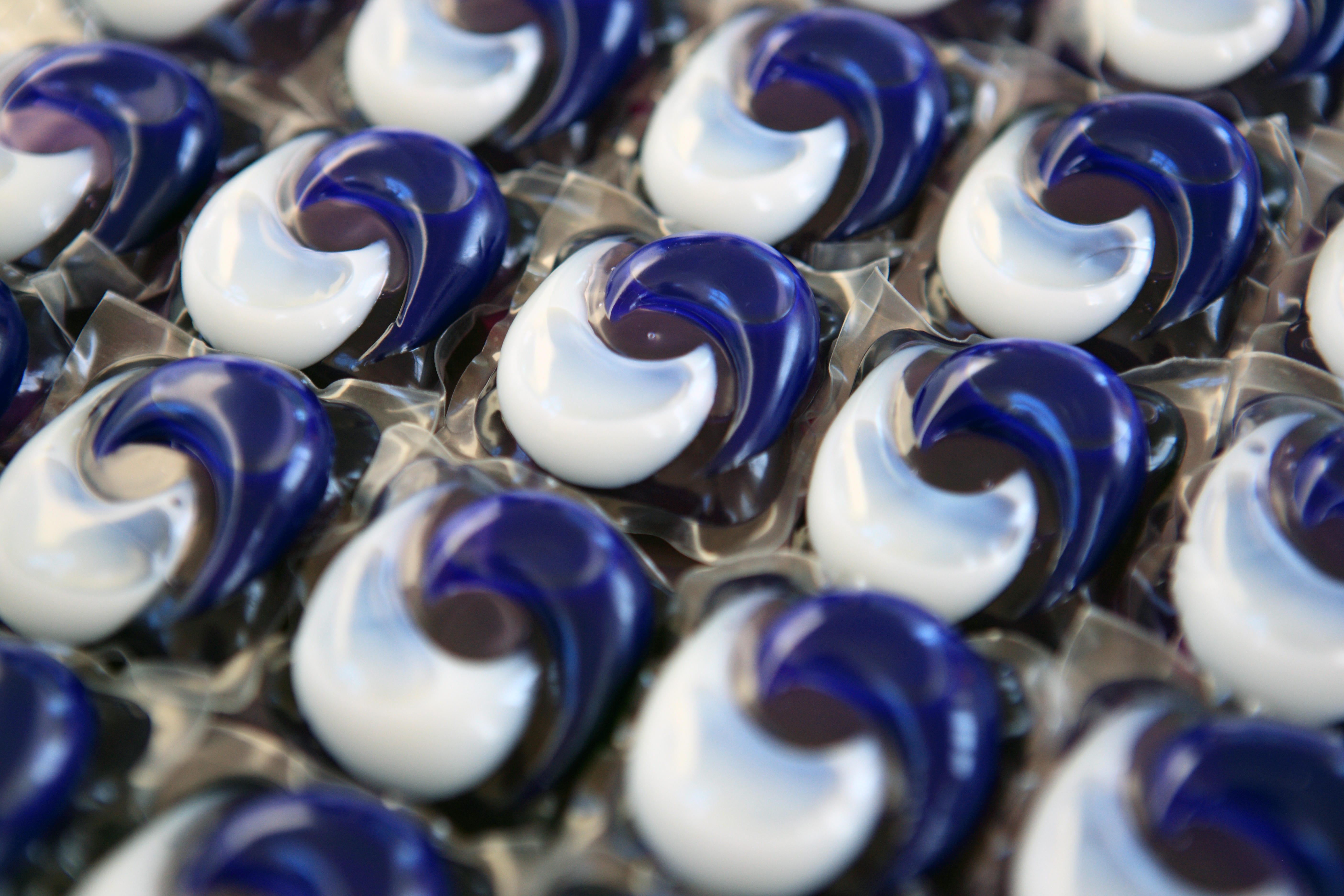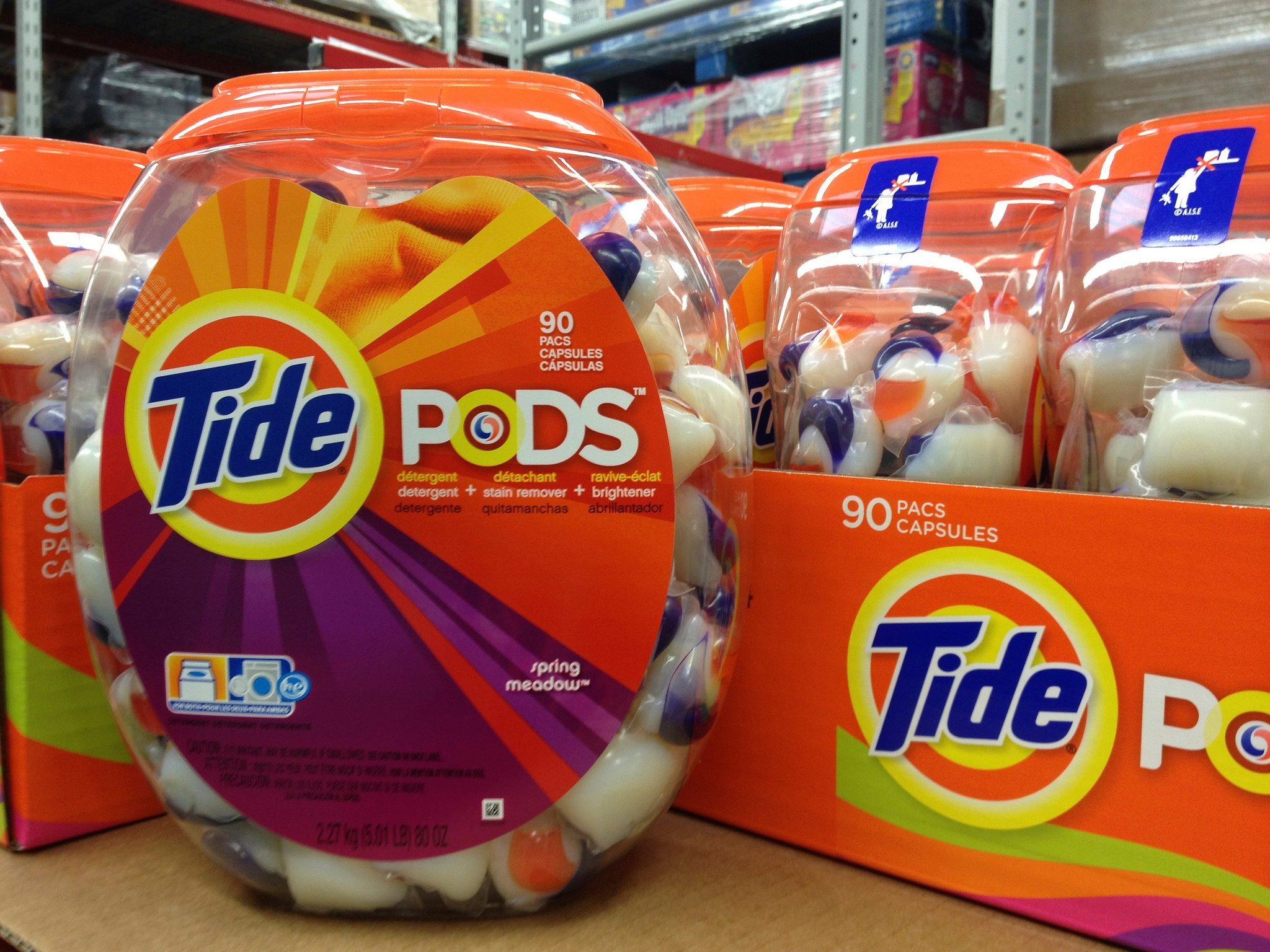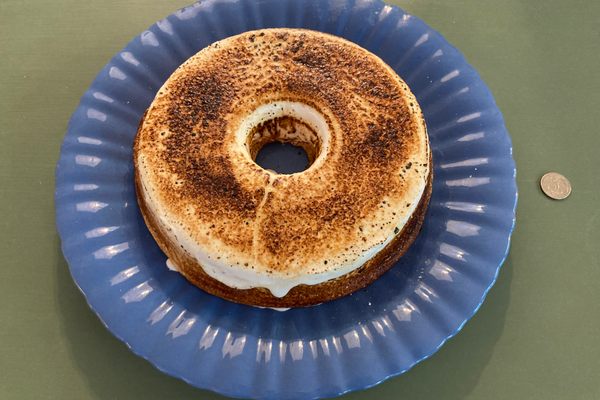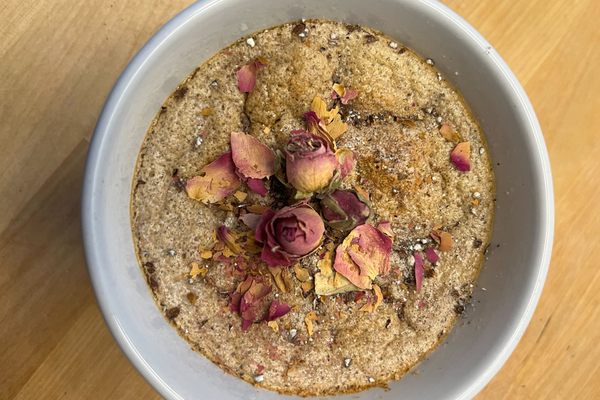An Anthropologist Explains Why We Want to Eat Tide Pods
But you really shouldn’t swallow laundry tablets.

It started as a joke. Tide Pods, the internet agreed, look delicious. After all, the packets of laundry soap come in bright rainbow shades. Their film is shiny, and the pods are round, almost dumpling-like. Despite their unnatural coloring and eerie perfection, they look good enough to eat. In 2015, the Onion wrote a tongue-in-cheek article on their appeal for children, and a video in early 2017 by College Humor emphasized their allure even for adults. But no one was actually supposed to eat them.
Then the “Tide Pod Challenge” happened. Currently a media fascination, it involves teens filming themselves biting down on the pods, usually with an expression of horror at the acrid taste. (Youtube and Facebook have been taking down many of the videos.) Unfortunately, most of the time, Tide Pods are eaten by accident. Since 2012, two young children have died after consuming laundry packets. So have six adults, each of whom suffered from dementia.
But what actually inspires the desire to eat a Tide Pod?
John S. Allen has a few ideas. Allen is a neuroanthropologist who specializes in human behavior and the evolution of the brain. In 2012, he published The Omnivorous Mind: Our Evolving Relationship with Food. In the book, he describes how human neurology and history influences the foods we seek out—and avoid. Allen, as it happens, knew of the Tide Pod trend: His teenage son showed him memes, including ones with Tide Pods arranged artistically on plates and in pans, as if ready to eat.
bone app the teeth pic.twitter.com/e2HWGCKRqu
— sabrina (@flopkon) December 30, 2017
Tide Pods, Allen says, seem to have several appealing qualities. The first are Tide Pod’s vibrant colors, whose vividness brings to mind ripe fruit. That being said, some of the colors aren’t food-like, probably on purpose. Allen singles out the color blue, which features on many Pods. “Ripened fruit aren’t blue; cooked meat isn’t blue,” he says. Blue is sometimes a warning: Mold, after all, can be blue.
But it’s not uncommon to make candy colorful, even blue, in order to attract children. That association never really goes away, even for adults, Allen says. For many people, the colors of Tide Pods don’t imply “Danger, Do Not Eat,” but suggest instead a large Gusher candy, which are often brightly colored. Colors are extremely important in helping young children understand the world, including what is and isn’t food.
“It shows how pervasive those things that we learn are [while we’re young],” Allen says. He likens children learning about what to eat to learning a first language. “If children find these attractive to eat, and they’re under five, it shows that their model of what is food is already forming,” he explains.
Humans have been adding interesting colors to their food for centuries, and not just for children. There’s a long tradition of using both safe and unsafe food dyes to decorate what we eat. But according to The Atlantic, the golden age of brightly colored food began in the 19th century, mostly to make mass-market foods attractive, and to give them a “standardized, recognizable appearance.”
Americans have always leaned hard into brightly-colored foods. Other cultures have not: Vibrant cakes from the United States inspire interest and sometimes disgust in Japan. When I worked in Taiwan, my coworkers were intrigued and puzzled by my red-orange DayQuil capsules. (One person commented that they were pretty.) Allen says he’d be interested to know if cultures with less vibrantly colored food are having a similar issue with tasty-looking laundry detergent.

Allen thinks that other aspects of the Pods might be more important than the color though. For example, their texture and shape might also be making mouths water, as your average Tide Pod has the softness of something edible. “It has that intermediate texture of lots of foods, even of meat,” Allen says. That squishiness, he adds, is one less barrier to popping one in your mouth. “It’s not hard like a rock, where you would immediately say, ‘I can’t chew this,’” he says.
Plus, Tide Pods’ small size makes them intriguing to children. Kids are often given food that’s been cut into smaller pieces. Even as adults, bite-sized, food-like items spark interest “deep inside all of us,” Allen says. Also, the plumpness of Tide Pods might be a draw. Roundness, whether of plates, cans, or candy, actually amps up our perception of a food’s sweetness. At least, that’s true in the West. This subliminal effect is likely cultural, perhaps due to how sweets are served and shaped.
Most of the appeal of Tide Pods, then, is probably specific to the West. “In our culture, [Tide Pods are] reminiscent of some food we do eat, and have eaten,” Allen says. Cues like a food’s color or smell can evoke childhood nostalgia and desire.
Allen adds that humanity’s omnivorous nature means we occasionally override instincts that tell us a food is dangerous. Constantly searching for new foods to eat—rather than sticking to set food sources—has proved evolutionarily advantageous. “We eat anything, virtually,” he says. If a potential food isn’t edible, humans try to modify it with tools or fire. One example Allen gives is coffee. Bitterness, especially to children, smacks of toxicity. Yet young people, by learning from others, usually overcome their initial suspicion of coffee’s acrid-seeming flavor.
Tide Pods, however, are not modifiable into anything edible. Ingesting Tide Pod gel, according to Consumer Reports, will result in intense vomiting and diarrhea. Its caustic mixture of ethanol, hydrogen peroxide, and soap can burn holes in soft tissue, and the toxicity can be deadly. For those wanting to get their Tide Pod on without risking imminent death, we suggest hunting down the nontoxic donut or pizza bite versions instead.
Gastro Obscura covers the world’s most wondrous food and drink.
Sign up for our regular newsletter.

























Follow us on Twitter to get the latest on the world's hidden wonders.
Like us on Facebook to get the latest on the world's hidden wonders.
Follow us on Twitter Like us on Facebook